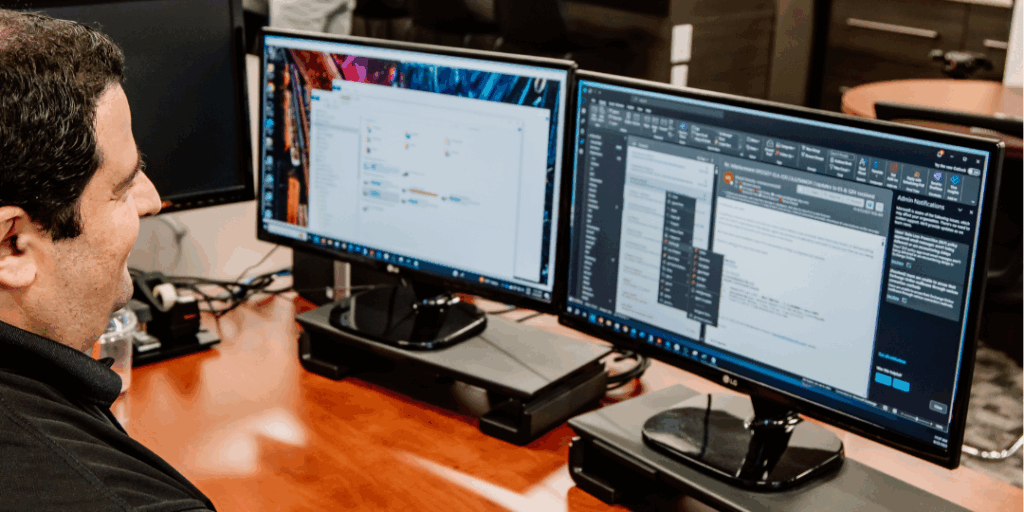
Interpro has been hitting the road, talking to clients and other translation leaders about AI translation in business FAQs. Interpro Founder, Ralph Strozza, shares what everyone wants to know about AI translation.
Ralph Strozza is the Founder and Consigliere of Interpro and is a lifelong leader in the translation industry, which includes leadership roles in machine translation and global team management before launching Interpro in 1995. With a career in translation spanning more than 40 years, Ralph’s journey began with a passion for languages evolved into providing consultative global growth advice to companies like Blue Yonder, Zebra Technologies, and Armstrong International. Today, his decades of experience and deep knowledge of the industry continue to guide the company’s growth of AI translation services.
Most Common FAQs About AI Translation in Business
Q: How is AI affecting the translation industry?
Ralph: AI in translation isn’t new. I’ve been in the translation game since before Google Translate was even a concept. Machine Translation has been around since the ‘50s.
It’s impacting our industry considerably, as it is most industries, but is not affecting how we conduct business. We do what we’ve always done: adapt and help people use new technology where and how it makes sense for their specific needs.
So what is new?
👉 Translation as a Feature (TaaF), like in Articulate Storyline and HubSpot.
👉 Saving “up to” 70% of translation costs with the latest cutting-edge tool.
That said, as a multilingual communications leader, you need to be able to navigate the new AI translation landscape professionally and make recommendations to your company. Here’s what you need to know.
Q: Has AI really changed translation? Or is it all hype?
Ralph: AI has definitely changed the way translations are processed. And it’s working for a lot of people. The real question is: how can you make AI translation work for your company?
Speed vs. Standards
Translation today is a hybrid sport. Strategic growth is the game, and revenue through multilingual communications is the prize.
The winning playbook? AI technology + human experts = faster translations you can trust. (And sometimes save money. More on that next.)
But speed without standards? That’s a risk you can’t afford to take.
The Ethical AI Translation Framework
👉 Interpro’s Guide to Ethical Use of AI for Translation outlines the core principles we follow to ensure AI-generated translation is used responsibly, effectively, and without compromising quality, security, or cultural relevance. And more importantly, any translation agency worth their salt should be able to speak to these topics.
Q: Can AI really save up to 70% on translation costs?
Ralph: Big savings through AI translation is possible, but not always realistic. And certainly not universal. We can’t personally endorse the magic 70% number that some companies promote.
We’re not in the business of inflating numbers just to grab your attention. We’ve seen cost savings hit 50% in the right scenarios and when clients are prepared for the up-front time and financial investments that a successful AI-generated translation process demands.
Q: Why isn’t AI translation isn’t a guaranteed cost saver?
Maximizing translation savings with AI requires consideration of the following:
- Content Type: Structured content saves money, but creative or legal text requires heavy rewriting.
- Source Quality: Poor grammar or errors in the source drive up post-editing costs.
- Terminology: Without consistent terms or a glossary, AI may guess wrong, adding rework.
- Sentence Complexity: Complex sentences confuse AI and increase editing time.
- Cultural Content: Idioms and metaphors rarely translate well, forcing full rewrites.
- Formatting: Broken tags or messy formatting reduce AI efficiency.
- Language Pairs: Mature pairs benefit from AI, but niche or complex languages don’t.
If you’re struggling to understand if and how AI can save you money translating, Interpro offers AI translation consulting. We will only make recommendations that enhance speed, quality, and cost.
Q: What should I be asking about AI (but I don’t know what I don’t know)?
Ralph: AI can save money. But the real ROI? Time, efficiency, opportunity.
Let me give you an example:
A while back, we took over a huge 12-month global growth project mid-stream. Another translation vendor had botched the first half of the job. 6 months wasted. But the deadline to expand into the new market didn’t move. Our team reworked all the translation work and delivered before the deadline (on time and done right), but it was a considerable effort.
But if we’d been their first partner equipped with today’s AI tools?
We could’ve completed that entire project in a month, easy. With quality intact. They could have expanded into the market with 11 extra months to prove ROI, test messaging, and increase revenue.
This is where AI shines: scaling global growth fast. But only if your translator can use it effectively (and can recognize when it doesn’t work).
If you need to enter a new market in 30 days, book an AI consultation to see how we can help you. You no longer have to choose between speed and quality.
Q: What should I be doing right now as a multilingual communications leader?
Ralph: I recommend starting with a translation needs assessment. Let’s dive into your people, processes, and problems and see what we can make easier for you.
AI can be an incredibly helpful translation tool. But until you identify your growth goals and challenges, taking next steps can be very difficult.
You can do this internally, or leverage an experienced and ethical team like ours to help. We’ll run discovery calls, audit your technology, content and workflows, and pinpoint:
- Where your current process is working
- Where it’s holding you back
- And where smart use of tech like AI can make a real impact
This isn’t just about translating more. It’s about translating smarter with better tools, clearer processes, and fewer headaches.
(We’re happy to help with that last part.)
Category: AI Translation
Service: Consulting
Don't forget to share this post!
Stay Updated with Interpro
Subscribe to our newsletter for the latest updates and insights in translation and localization.




